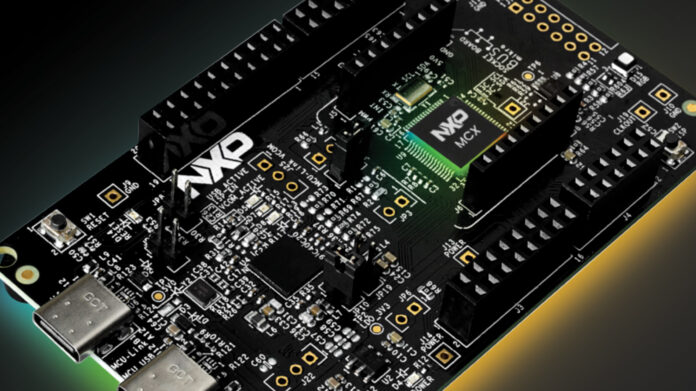Chip design company NXP Semiconductors has released two new lines of low-cost and low-power microcontroller units (MCUs) to support intelligent edge applications in industrial and industrial IoT gadgetry, plus in sundry smart-home and smart-city devices. The MCX A14x and A15x are the first commercially-available MCU ‘families’ in the Dutch firm’s new A-class series of its MCX portfolio of Arm Cortex-M based IoT units.
NXP called them “low-cost, easy-to-use, [and] small-footprint”; they are geared for the lowest-power end of its MCU range for IoT devices, plus other industrial sensors, motor units, and power controllers. They use a Cortex-M33 core. The MCX A14x runs at up to 48 MHz; the MCX A15x runs at up to 96 MHz. The devices also feature support for low-power peripheral sets, BLDC/PMSM motor control, and integrated sensor interfaces (MIPI-I3C, I2C, SPI).
The A series will support up to 1MB of flash memory variants, as the platform extends through 2024. Its architecture is designed to support high I/O utilization and power efficiency with a “simple supply circuit in a smaller footprint”, plus more GPIO pins for additional external connections. They use the latest version of its FRDM development platform, part of its MCUXpresso software and services portfolio, to accelerate prototyping, porting, and custom development.
Its FRDM boards promote “creative freedom” for a range of applications. Standard tool suites across its MCUXpresso environment, plus support for FreeRTOS and Zephyr, offer scalability and portability across both MCX A and other NXP platforms, said NXP. It is offering a range of in-house and third-party add-on boards with pre-populated headers; a new app hub (Application Code Hub) offers NXP-designed software examples, code snippets, and software packs.
NXP stated: “As intelligent devices continue to proliferate across the edge, engineers are increasingly seeking new, cost-effective ways to add essential innovation to their designs. The MCX A series is designed to make it easy for engineers to do just that, with low cost, small-footprint MCUs with autonomous, low-power peripherals that enable differentiated edge solutions that pioneer a smarter, more connected world.”
Charles Dachs, senior vice president for IoT and industrial at NXP, said: “The A series is an important milestone… to make the newest innovations accessible to every engineer… The MCX portfolio [is] the foundation for the future of power-efficient edge devices, expediting the deployment of disruptive technology… The MCX A devices build on that foundation, distilling integration into essential features, encouraging engineers to design without bounds.”

